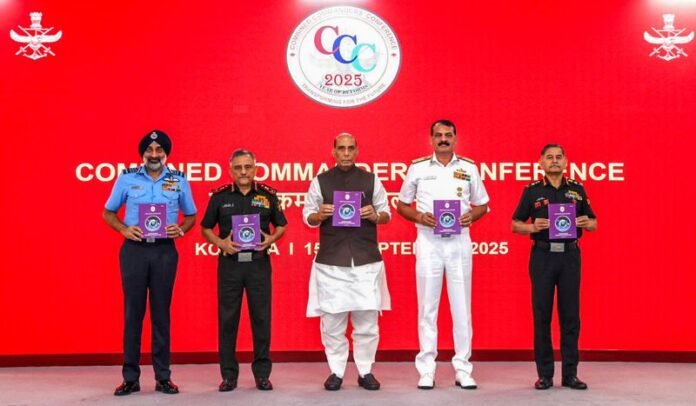In a major step towards greater integration of the Armed Forces, the military will set up three new joint military stations on the mainland, create a common education corps and implement key transformations across the Army, Navy, and Air Force.
The decisions were announced on the final day of the Combined Commanders’ Conference (September 15-17) in Kolkata. The office of Chief of Defence Staff (CDS) General Anil Chauhan, who also heads the Department of Military Affairs, released details of the outcomes.
A key decision is the creation of three joint military stations, where all three Services will share a common establishment. Until now, the only tri-services command with such facilities has been in the Andaman and Nicobar Islands. The new stations are expected to be located on the mainland.
Another landmark reform is the merger of the education branches of the three Services into a single “Tri-Services Education Corps”. This will mean a unified cadre for training institutions, including the National Defence Academy, Indian Military Academy, Indian Naval Academy, and the IAF Academy.
The CDS also reviewed directions given earlier in the conference by Prime Minister Narendra Modi and Defence Minister Rajnath Singh. Both had stressed the urgency of jointness and integration to meet future security challenges.
A post from the CDS office on X said the conference had “identified and finalised the most important transformations required that will drive impactful changes in the future”.
The Ministry of Defence, in a statement, said the deliberations focused on enhancing interoperability, streamlining decision-making and reforming institutional structures for space, cyber, information and special operations. It also emphasised adopting a technology-led approach to modern warfare, with innovations seamlessly integrated into operational doctrine.
The decision to merge the education corps of the tri-services into one, was taken by all the Chiefs and Commanders, present at the conference. Announcing the same, the Headquarters Integrated Defence Staff stated that the decision on formation of three Joint Military Stations was also announced during the CCS 2025.
“Additionally, the Chief of Defence Staff General Anil Chauhan also reviewed the directions given by the Prime Minister Narendra Modi and Defence Minister Rajnath Singh and discussed the roadmap of implementing them in a time bound manner. CCC 2025 has been instrumental in identifying and finalising the most important transformations required that will drive impactful changes in the future,” said the HQIDS.
In his closing remarks the CDS summarised key outcomes and reiterated the commitment of the Armed Forces to continually transform to remain agile, self-reliant, and future-ready. He highlighted the need to institutionalise reforms as an ongoing process, aimed at preparing the Forces to effectively tackle challenges in an increasingly complex global environment.
Calling upon the Commanders to be proactive in their approach and strive to build the Sudarshan Chakra, Singh said that a committee has been formed to examine the project and prepare a “realistic action plan”. He further suggested devising a medium-term plan for the next five years and a long-term plan for the next ten years to bring the vision to fruition.
On 15th August, Prime Minister Narendra Modi had unveiled the ambitious national security initiative ‘Mission Sudarshan Chakra,’ aimed at safeguarding India’s critical infrastructure over the next decade by advancing indigenous technological development.






